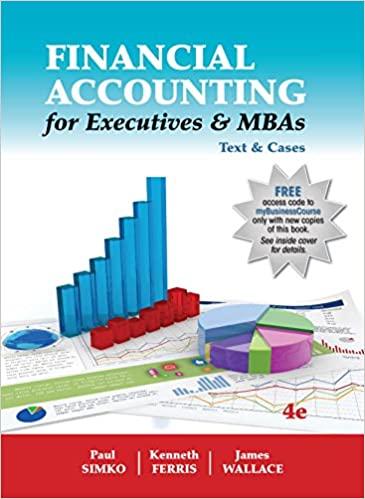Photovoltaics, Inc. is an Arizona-based manufacturer and distributor of photovoltaic solar energy units. The company was founded
Question:
Photovoltaics, Inc. is an Arizona-based manufacturer and distributor of photovoltaic solar energy units. The company was founded in 2015 by Arthur Manelas and Harry Linn. Manelas, formerly a research scientist with NASA, had been operating a small photovoltaic manufacturing company in Massachusetts when Linn, a marketing consultant to the industry and himself an owner of a solar energy company in Oregon, proposed the joint venture.
Convinced that excellent market opportunities for the solar arrays existed, Linn began preparing a prospectus that could be used to help raise capital to significantly expand Manelas’s current operations. The two founders had located a manufacturing facility in Tucson, Arizona, that would cost approximately \($8\) million to acquire and equip with updated production equipment. Based on his prior experience, Linn knew that prospective venture capital investors would expect to see the following:
1. A balance sheet identifying the company’s assets and equities as they would appear at the start of operations.
2. A pro forma income statement for the first year of operations.
3. A pro forma balance sheet as it would appear at the end of the first year of operations.
4. A pro forma statement of cash flow for the first year of operations.
In anticipation of preparing these reports, Linn collected the following information and arrived at the following projections for the first year of operations:
Data related to pre-opening events
1. Ten million shares of common stock (par value \($1)\) were authorized for sale by the company’s charter of incorporation. Manelas received 500,000 shares in exchange for the rights to the photovoltaic patent, and Linn received an equal number of shares after contributing \($500,000\) in personal funds to the firm.
2. Incorporation and attorney’s fees (start-up costs) amounted to \($27,000\) and would be paid in cash. (Start-up costs are generally expensed as incurred; however, Linn decided to capitalize these costs as assets on the balance sheet.)
3. Sales of common stock to venture capitalists would total 2.5 million shares. A selling price of \($3.25\) per share was set, and transaction costs of 1.5 percent of the stock proceeds were projected (to be paid in cash). (Hint: Stock issuance fees are accounted for as start-up costs.)
4. The \($8\) million purchase price of the manufacturing facility, paid in cash, was to be allocated as follows:
building —\($4.5\) million; land—\($750,000;\) and, equipment—\($2.75\) million. In addition, raw materials and partially completed solar units would be purchased on credit from Manelas’s original manufacturing company at a cost of \($1.3\) million. A note, secured by the inventory itself and accruing interest at a rate of 10 percent per year on the unpaid balance, would be issued to Manelas.
Projected events:
5. Revenues from the sale of solar arrays for the first year were projected to be \($480,000\), with 20 percent of this amount estimated to be uncollected at year-end. The company had decided to follow a particularly rigid credit-granting policy until operations were well established; hence, no provision for bad debts would be established because no uncollectible accounts were anticipated.
6. Cash purchases of inventory were estimated at \($70,000;\) the cost of inventory sold was projected to be \($215,000\).
7. Insurance on the building, equipment, and inventory was expected to cost \($2,700\) per year.
8. Employee wages were estimated at \($72,000;\) selling and administrative costs were projected at 2 percent of gross sales.
9. The useful life of the acquired assets was estimated as follows:

Linn decided to amortize the patent over its remaining legal life of 17 years and amortize the start-up costs over five years.
10. Salaries to Linn and Manelas were set at \($20,000\) each for the first year.
11. Interest payments, but no principal repayments, would be made on the ten-percent notes issued to Manelas during the first year of operations.
12. Income taxes were estimated at 22 percent of pre-tax net income.
13. Acash dividend of \($100,000\) would be paid at the end of the first year to the equity investors.
Required:
1. Using the balance sheet equation as illustrated in this chapter, prepare the following financial statements:
a. Opening balance sheet as of the start of operations (i.e., after pre-opening events).
b. Income statement for the first year.
c. Balance sheet at the end of the first year.
d. Statement of cash flow for the first year.
2. Asa prospective investor in the company, what factors would you look for in the financial statements to help you decide whether to invest in the venture? Do you agree with the decision to pay a \($100,000\) cash dividend at the end of the first year of operations? Why?
Step by Step Answer:

Financial Accounting For Executives And MBAs
ISBN: 9781618531988
4th Edition
Authors: Wallace, Simko, Ferris





